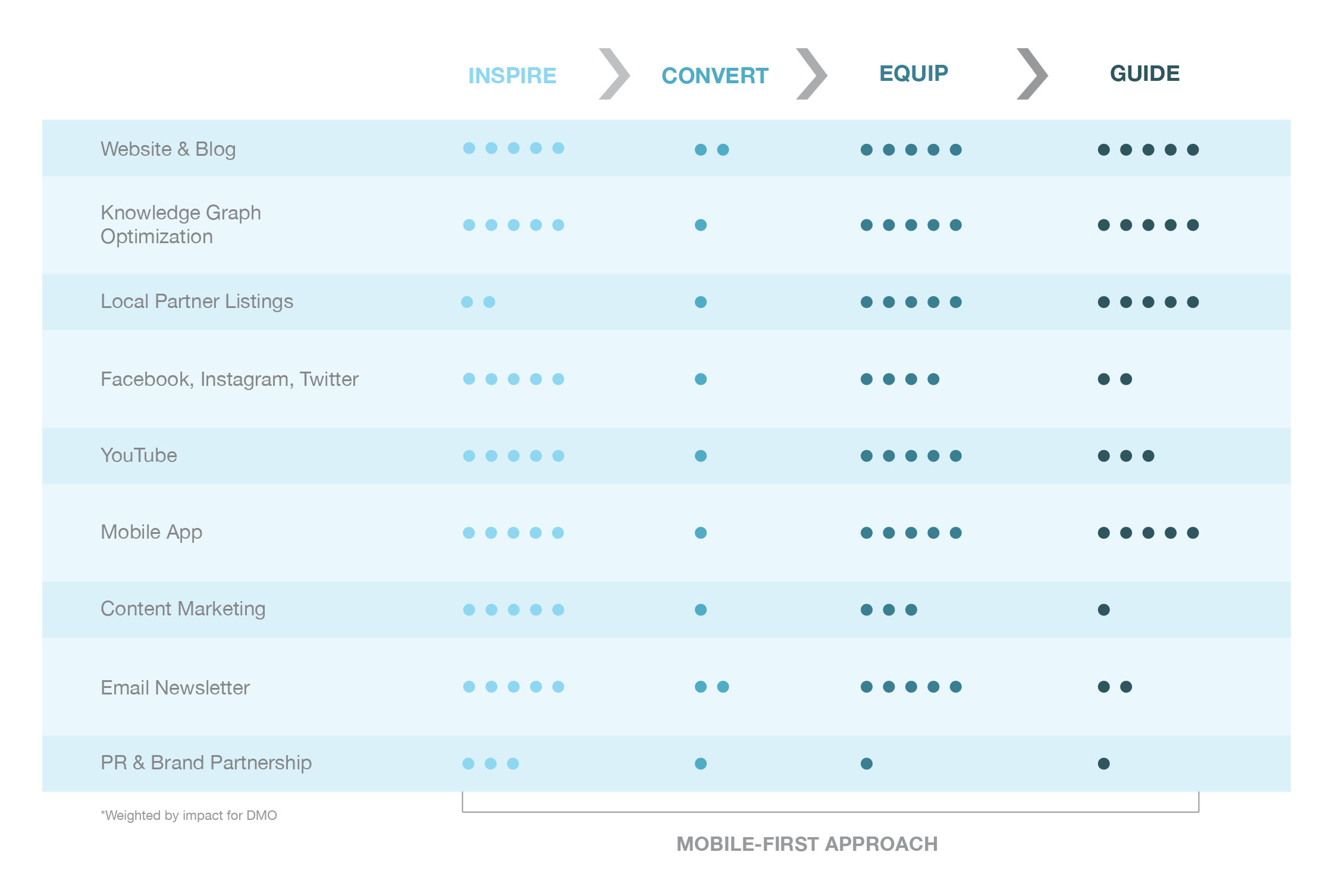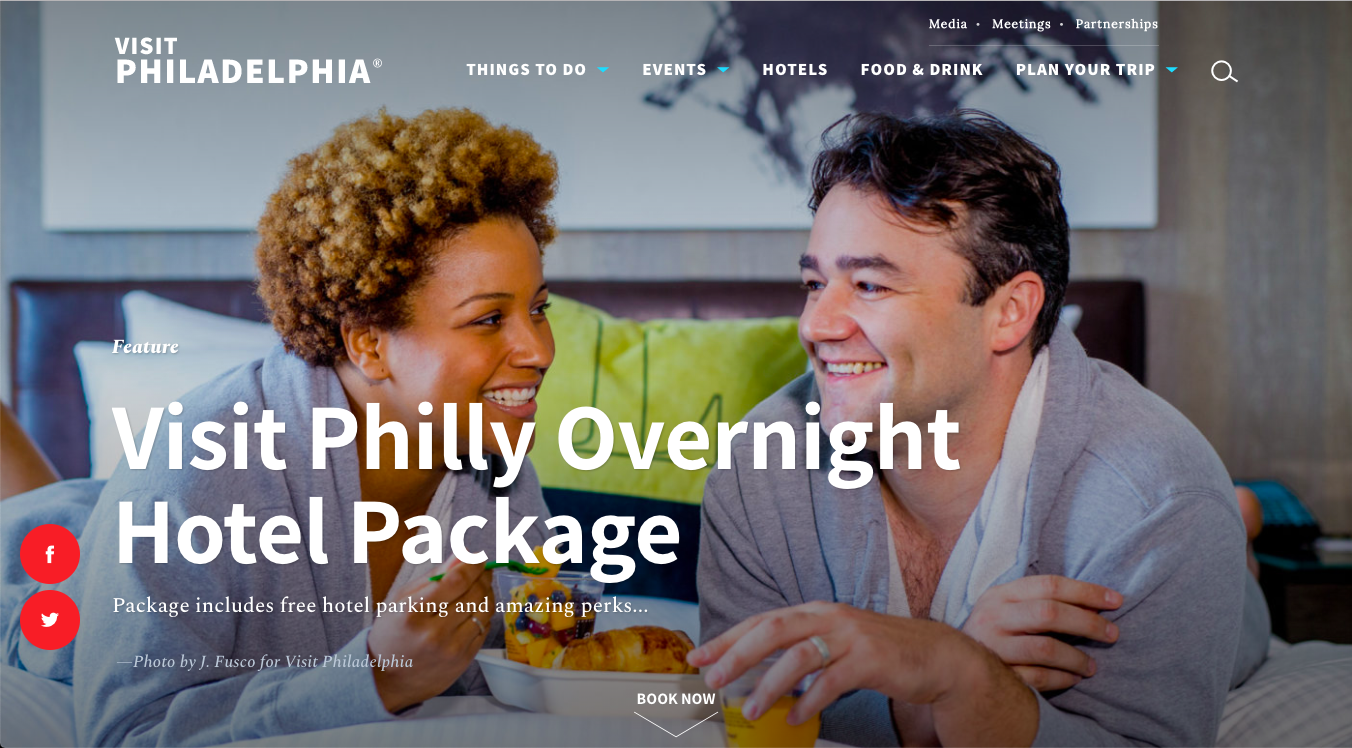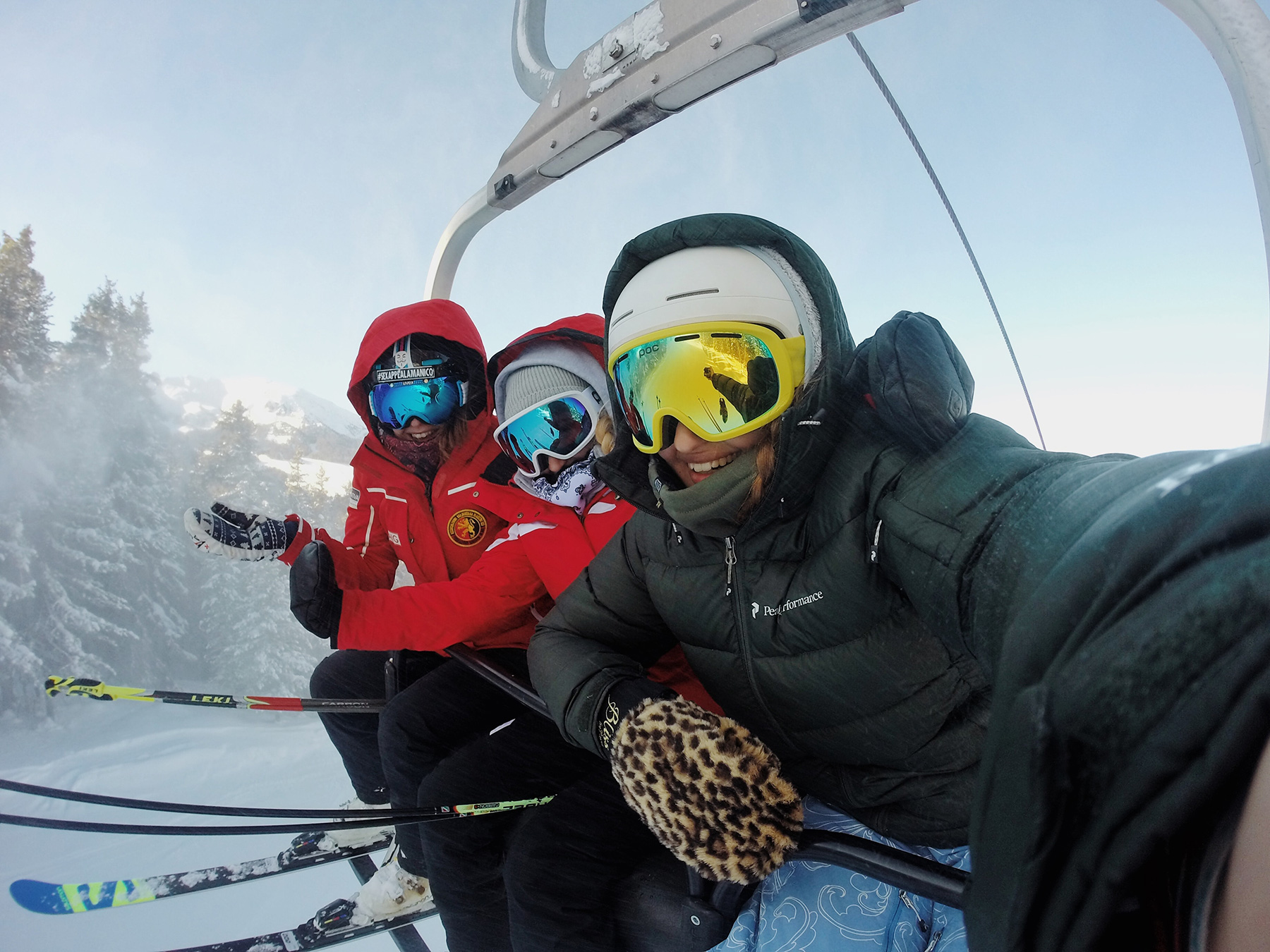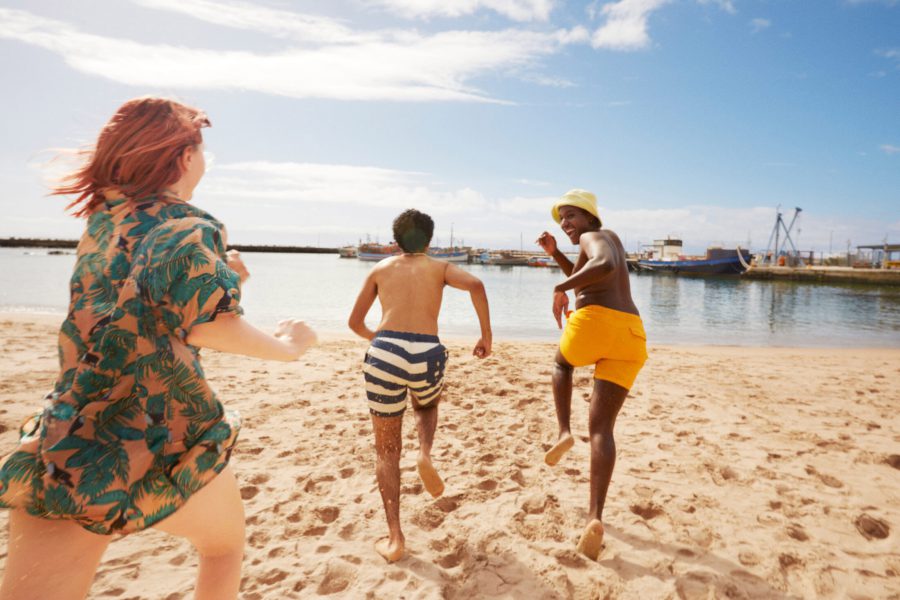If you’ve been keeping up to speed with Google’s search results for the travel and hospitality industry, it’s clear that today’s organic landscape presents as many challenges as it does opportunities for DMOs. Google’s own productization within their search results has had a tremendous impact, especially in the past two years. While there could be other reasons you’re seeing reduced traffic to your destination site that should be uncovered and addressed, we know one thing is for certain—Google’s dominance in their own search results has changed the game a bit. So does this mean your website and owned properties are on their way to obsolescence? Not in our opinion. That’s why we’ll be sharing our ideas on how you can navigate this new search landscape.
It all starts with getting your organization’s website and owned properties to start working harder, which requires a shift in perspective.
The rise of Google’s Travel products.
It’s a hot topic within the travel industry, and it should be. Whether you’re a DMO, an OTA or a local business, the search engine share Google captures through its Travel products has seen incredible growth in the past two years, across Flights, Hotels, and Destinations — Google’s specialized results that appear on desktop and mobile. Google Travel is the stuff of nightmares to OTAs, and the rise of Destinations creates its own challenges for DMOs in search results. You may be wondering how you’re supposed to compete within a search engine that places high emphasis on its own products for travel that, while free, aren’t always the easiest for your organization and partners to execute upon. To be clear, we will never underestimate the value of inclusion in Google’s Travel products and feel every DMO should take part in programs that give their organization the highest chance of inclusion.
As fellow marketers, we challenge DMOs to plan their digital efforts around a traveler’s entire digital journey, taking a cue from Google by approaching their “products” the same way.
Prioritizing your efforts for efficiency & impact.
While traffic may be down for your website and other properties, you’re still getting traffic. So how do you get more? This goes back to the shift in perspective. If Google presents their own products in search results based on a traveler’s search query, why can’t destinations aim to do the same with theirs? By viewing the parts and the whole of your organic marketing program, you can focus your efforts on where your website and properties can truly be present within organic search results based on what people are searching for and your ability to be present in search results.
While the travel funnel has been described in a straightforward way by marketers (Dream, Book, Prepare, Go), we like to view this journey through the lens of a destination marketer, to consider our own role in creating online experiences that assist travelers every step of the way. We call it the Digital Travel Continuum and it looks like this:
Will your website or other owned properties always rank well for searches at every stage along this continuum? The short and unfortunate answer is no. That’s why in addition to your own participation in Google’s DMO Partnership Program, it’s vitally important for you to encourage full participation from your local businesses and attractions, as they make up an incredible amount of results within this immersive search experience. However, we feel there are still plenty of other ways to create rich, dynamic experiences for visitors, that involve your own properties.
The Digital Travel Continuum explained.
We’ve analyzed search results at each stage in the continuum and determined which DMO properties most frequently appear on the first two pages of Google. Based on this information, we’ve created a matrix that weighs each based on the opportunity we feel they have to reach travelers at each stage, with 5 being the greatest. It looks like this:

By doing this, our goal is to take a holistic but also realistic view of the organic search landscape in order to help DMOs reach potential travelers at the right time, in the right place, and with the right message. You’ll notice, for example, that Website & Blog are rated equally high in the Inspire, Equip, and Guide stage. This simply means that this channel has great potential for visibility in searches at these stages, which means you’re increasing your chances of driving qualified traffic to your site by strategically planning your website and blog content around your audience’s search behavior in these stages.
We use the Digital Travel Continuum as a filter to not only determine what channels to focus on, but what content and experiences are needed in each stage. This framework almost begs the question, “What needs to be true for our target audience to take action?” More importantly, it helps us identify what those ideal actions are at every stage to measure our performance moving forward.
So where’s a good place to start? Well, research, of course! We like to fully understand the search behavior of our target audiences to provide a gap analysis that shows how a client’s properties are delivering against queries travelers are using at every stage in the continuum — all with the goal of delivering the best answers.
With this in mind, let’s define the general objectives we’re trying to achieve at each stage in the continuum through a destination marketer’s lens and bring to light some of those frequently asked questions.
Understanding intent to drive action along the way.
INSPIRE
Objective: “How do we create and distribute content in a way that inspires travelers to consider our destination during the initial stages of planning?”
Searches during this stage in the continuum are often very broad; however, a DMO’s properties can still rank effectively when their destination is included in a traveler’s search. In addition to creating inspirational content across many of your properties, there’s also an opportunity to use PR to distribute news on recent wins or awards your destination has received in the hopes that it gets picked up by other publications, or even negotiating an editorial piece or guest post with them to create additional touch points. We often find that these third-party sites range from larger publications (e.g., Thrillist, Timeout, etc.) to niche publications authored by local enthusiasts. The saying, “if you can’t beat ’em, join ’em” holds true here as organic search marketing requires us to think beyond just our website to consider all visibility points in search engine results.
Examples of search queries for the Inspire stage:
“top ski resorts in US”
“best beaches in florida”
“vacation destinations for couples”
CONVERT
Objective: “How do we facilitate direct conversion through our owned properties to make it easier for travelers to book their entire trip?”
You’ll notice that compared to other properties in our matrix, the Convert stage is prioritized the lowest overall. With Google taking up substantial real estate in search results with Flight and Hotels, coupled with the presence of OTAs, the likelihood of DMOs capturing significant organic traffic at this stage is less likely. While a DMO’s website may not rank effectively for book-ready travelers, not every traveler takes the same path to conversion. Creating a “one-stop” hub on your website could prove beneficial for travelers who are looking to make swift decisions, whether they’re traveling for leisure, business, or both. The key is creating a streamlined, intuitive experience even when you’re leading visitors to a separate booking engine like Expedia, for example.
We think Visit Philadelphia does a nice job of this by providing their own incentives for booking. Rather than simply providing direct links to OTAs, they’re making a good effort to allow prospective travelers to browse and book hotels directly within the site. By strategically placing CTAs to partners and/or your own unique offerings, you can create a “sticky” and seamless experience for travelers who will, ideally, use your site to book their trip.


Also, email newsletters, and strategic drip campaigns can encourage repeat visits. How are you getting back in front of those who have already demonstrated an intent to visit?
Example search queries for the Convert stage:
“car rentals at denver airport”
“hotels on magnificent mile”
“hotel packages philadelphia”
EQUIP
Objective: “How do we equip travelers with the ideal planning experience that makes itineraries easy to create and share?”
Perhaps the greatest opportunity for DMOs, and where we’ve seen considerable search engine share, is through offering detailed planning experiences. Arguably, as a DMO, you’re probably the best equipped to help your guests plan their experiences. Who knows your destination better than you? The granular information DMOs can provide on their neighborhoods and attractions is perhaps one of their greatest strengths for an SEO standpoint. When you couple this with the ability to quickly share itineraries via social plugins, it’s an incredible branding tool. Additionally, a DMO’s website can capture longer tailed, informational queries – those super specific search queries that a DMO’s website is inherently equipped to answer.
Examples of search queries in the Equip stage:
“what to expect at sea world orlando”
“planning a day at navy pier”
“family friendly museums in nyc”
There’s also the potential to leverage a mobile apps that can appeal to a wide range of audience segments and while creating continuity in a brand’s messaging. The app can serve as a continued reference point during a trip to round out their digital journey.
GUIDE
Objective: “Once at my destination, how do I present travelers with the most useful experience?”
Sure, a lot of searches during this stage include requests for addresses or directions and Google Business listings and Maps will efficiently answer these questions. However, it doesn’t mean that your website, blog, and social properties can’t be a guide for visitors. In fact, this stage in the continuum presents a great opportunity for DMOs to be the go-to resource for visitors by providing them with event guides, schedules, helpful “day of” tips, local secrets, and information for niche interests. When you take inventory of all your destination has to offer and prioritize these themes by search volume, you’ll uncover a wealth of topics that can not only rank effectively in search results, but create positive, engaging experiences for your guests.
Example search queries in the Guide stage:
“top distilleries in seattle”
“vegan restaurants st. louis”
“nola jazz fest schedule”
Keeping a mobile-first mindset.
You’ll notice in our visual of the Digital Travel Continuum, we reference a “mobile-first approach” that spans all channels and stages. In our opinion, executing your marketing initiatives with a mobile-first mindset is one of the single most important things you can do to maintain engagement and drive action. Also, this isn’t just about your website. Even the content that you publish on YouTube, social, and in your emails should ensure that anyone on a mobile device can receive clear information, imagery, and calls to action.
You may not have heard of Google’s Mobile-First Index rollout, where Google directly stated that they’re indexing sites differently these days. In reality, they gave a warning to all marketers when they rolled this out by saying it “…means that we’ll use the mobile version of the page for indexing and ranking, to better help our – primarily mobile – users find what they’re looking for.”
Previously, Google used the desktop version of a site to understand its content and index it. While many sites are considered responsive today, those with vastly different experiences on mobile versus desktop or just poorly executed mobile experiences will be operating at a loss. When we conducted an independent audit of 10 randomly selected DMO websites, we noticed that over half of them had issues with their mobile experience. While this often falls by the wayside for many brands, optimizing for mobile not only means that your website will stand the test of time, but you’re creating the ideal environment for engagement and conversion across all of your owned properties.
Wrapping it up.
If there’s one key takeaway we want to leave you with, it’s the need to prioritize your marketing initiatives based on where your properties can win in the organic search landscape. You just need to know where to focus and once you’ve got that nailed, you can put your internal and partner resources towards creating rich, engaging, and useful experiences that set your destination apart and ultimately, drive those metrics that every DMO cares about. After all, planning a trip is a digital journey that always leads to a destination. The goal is to make that destination yours.


















